#keiji sada
Text
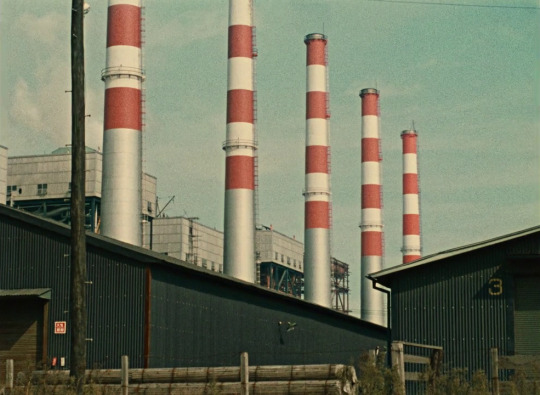


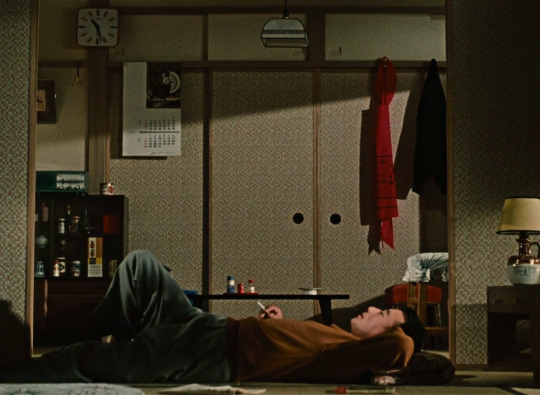




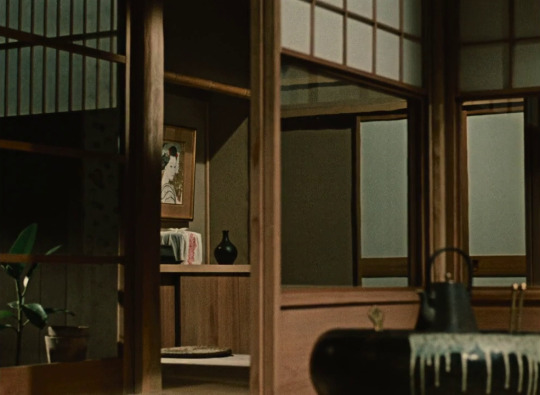
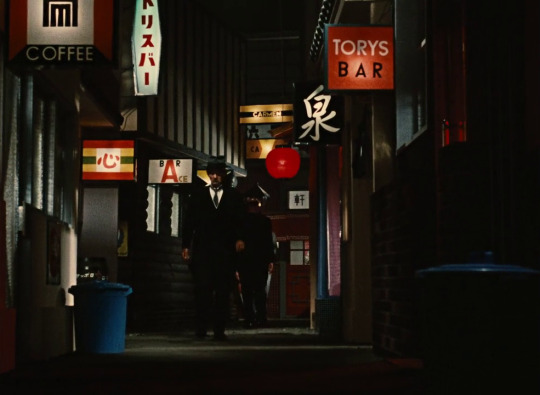
An Autumn Afternoon (1962) | dir. Yasujirō Ozu
#an autumn afternoon#yasujirō ozu#chishū ryū#shima iwashita#keiji sada#mariko okada#films#movies#cinematography#screencaps#yasujiro ozu
169 notes
·
View notes
Photo









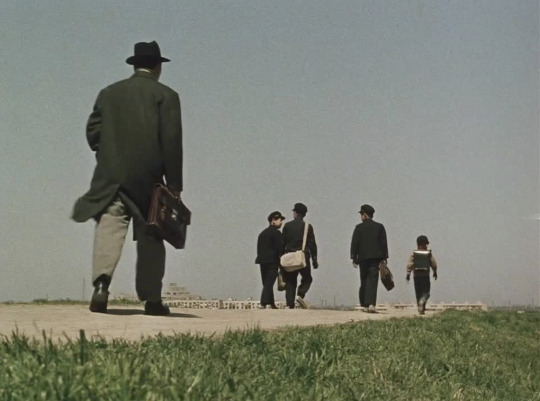
SUBLIME CINEMA #648 - GOOD MORNING
Ozu’s films were characterized by the relentless use of 50mm lenses and what cinematographer Yuharu Atsuta referred to as ‘tatami shots’ - table level static angles of domestic scenes, meticulously composed and coordinated by tone, shape and color. The angle and lack of movement have a flattening effect onto the image; Ozu’s films often look like unsettlingly symmetrical print work.
The narratives puzzle together in similar ways: circuitous tapestries of the private lives of ordinary people, stories that are profoundly observant and gently emotional.
#cinema#film#movie#movies#films#great film#good morning#ozu#Yuharu Atsuta#Yasujiro Ozu#Ohayō#50's film#1950's#japan#Japanese cinema#Keiji Sada#Yoshiko Kuga#tokyo#classic film#world cinema#drama#emotional#emo#emotional film#design#cinematography#cinephile#color film#color#35mm
161 notes
·
View notes
Text

Keiji Sada, December 9, 1926 – August 17, 1964.
Yasujiro Ozu’s Good Morning (1959).
16 notes
·
View notes
Photo
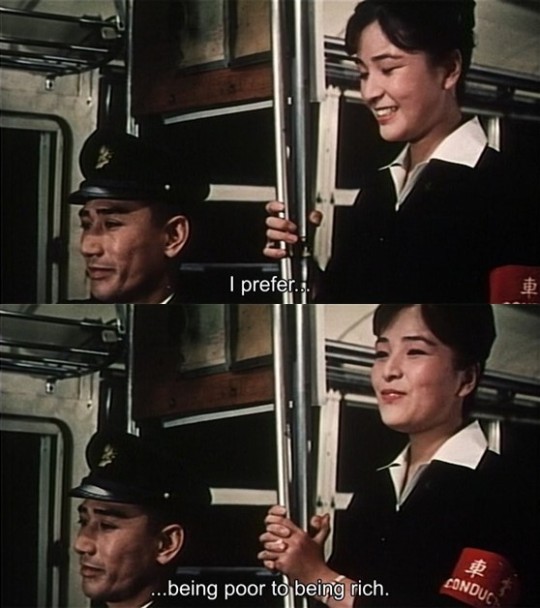
Kumo ga chigireru toki (Gosho Heinosuke, 1961)
#Kumo ga chigireru toki#as the clouds scatter#gosho heinosuke#heinosuke gosho#sada keiji#keiji sada#chieko baishō#baishō chieko#1961#japanese cinema#japanese movies#japanese film
12 notes
·
View notes
Photo

Keiji Sada and Yuko Mochizuki in Tragedy of Japan (Keisuke Kinoshita, 1953)
Cast: Yuko Mochizuki, Yoko Katsuragi, Masami Taura, Teiji Takahasi, Keiji Sada, Ken Uehara, Sanae Takasugi, Keiko Awaji. Screenplay: Keisuke Kinoshita. Cinematography: Hiroshi Kusuda. Art direction: Kimihiko Nakamura. Music: Chuji Kinoshita.
Tragedy of Japan is the Criterion Channel's title for Keisuke Kinoshita's film, but I prefer the one used on IMDb and elsewhere: A Japanese Tragedy. Not only does that title echo Theodore Dreiser's An American Tragedy, but it also particularizes the story better. What happens to Haruko Inoue (Yuko Mochizuki) and her children is not a microcosm of recent Japanese history but a product of it -- one among millions, including those told in Kinoshita's many films. The film also demonstrates something of Kinoshita's tendency to overreach, often with distracting innovations such as the oval masks that frame scenes in You Were Like a Wild Chrysanthemum (1955) or the color washes that creep into The River Fuefuki (1960). Here it's an unwise use of extensive documentary footage of the war and its aftermath as a frame for the fictional story. The contrast between the raw actuality of news footage and the artifice of movie storytelling works to the disadvantage of the latter. Which is unfortunate because Kinoshita has a good story to tell about Haruko's attempts to survive and to provide for her children and the unforeseen consequences of her efforts, as well as the problems faced by Seiichi (Masami Taura) in his ambitious pursuit of a medical career and Utako (Yoko Katsuragi) in her disastrous involvement with her English teacher. None of Haruko's good deeds, it seems, go unpunished, as the skirting of the law that she found necessary is held against her in more peaceful and prosperous times. Despite the mistaken attempt to fold these stories into a larger historical context, this is one of Kinoshita's better films, marked by some very good acting and genuine human dilemmas.
3 notes
·
View notes
Text
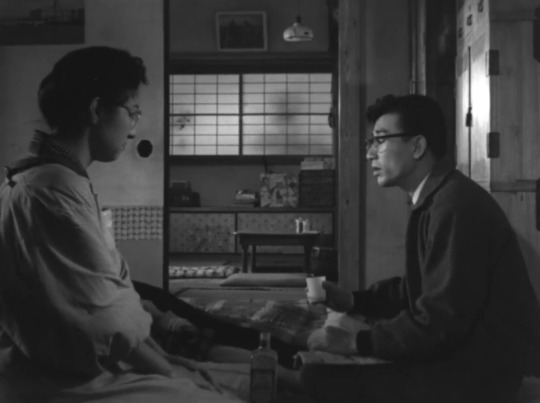


Danger Stalks Near(1957)
#film#danger stalks near#fūzen no tomoshibi#1957#keiji sada#hideko takamine#keisuke kinoshita#50s#vintage#...
1 note
·
View note
Text

#Le Goût du saké#Après-midi d'automne#秋刀魚の味#An Autumn Afternoon#Sanma no aji#Yasujirō Ozu#Chishū Ryū#Shima Iwashita#Keiji Sada#1962
1 note
·
View note
Text
Equinox Flower

The night before a wedding, the bride’s disapproving father (Shih Saburi) and his friends sit at a table. They ask one man (Chishu Ryu) to recite, and he chants a poem about a samurai preparing to go to battle and vanquish his enemies. When he stops, the others offer their own lines on the same theme. It’s a key scene in Yasujiro Ozu’s EQUINOX FLOWER (1958, Criterion Channel). For all the horror westerners associate with Japanese men going to war, it’s also an affectionately comic moment, the last gasps of a traditional patriarchy being lost by men who are more to be pitied than feared. The film deals with a well-off businessman (Saburi) shocked when a young man (Japanese matinee idol Keiji Sada) asks to marry his daughter (Ineko Arima). This isn’t the traditional arranged marriage Saburi had dreamt of, but then, this is a new world in which sons and daughters marry out of love rather than duty. His resistance to the engagement, even as the women around him come to side with Arima, is the heart of the film. Saburi never blusters. This is a very quiet film driven by small details. Early on, Saburi comes home from the office and undresses, dropping his clothes on the floor as his wife (the utterly exquisite Kinuyo Tanaka) picks up and folds each item. Later, when he comes home and demands the submissive woman’s opinion of the engagement, she drops his clothes on the ground and tells him she’s come to know the young man behind his back and sides with her daughter. This was Ozu’s first color film, and he chose the German Agfa film, because he liked the way it showed his favorite color, red. It turns up as an accent throughout the picture, particularly as his famous red tea pot, suggesting the passions lurking beneath the staid traditions of Japanese family life. Throughout the film, little objects — a cigarette, a telephone, a tea cup — offer hints of the characters’ thoughts. Like many of Ozu’s films, EQUINOX FLOWER deals with the disappointments inherent in traditional family structures. Even as the young couple fights to marry despite the father’s disapproval, you know that their marriage will not be without hardships. But they’ll be the hardships the two have chosen to face, not those chosen for them by their elders, and maybe that move into self-determined uncertainty is more heroic than the battles the old men sing of to comfort themselves over their loss of power.
1 note
·
View note
Photo
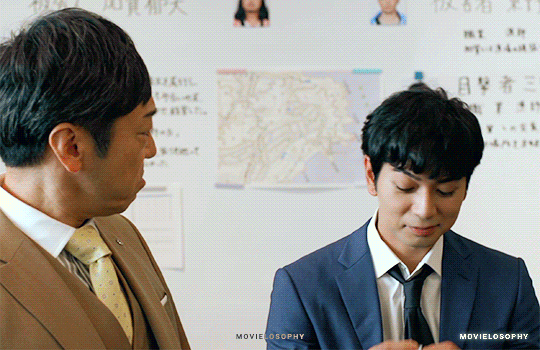


99.9 Criminal Lawyer: The Movie (2022) ~ he’s so impudent
#favorite duo#99.9 Criminal Lawyer: The Movie#99.9: Keiji Senmon Bengoshi#dorama#kagawa teruyuki#character: sada atsuhiro#matsumoto jun#character: miyama hiroto
14 notes
·
View notes
Text
Yiyr turn ti xir seath game by mahofuty if itbeazbwriyten by me afyer midnigjt
Sada Cgudking
Hoy Taxuna
KEIJI shiniohi
KANNA mizuxbi
Q-TAFI BUTHRTBERH
Sou Hiuori% Shin Ysukim
REKO yanudamd
NAI EHOJORI
MI 'daoyou
Hin Ibushi
KAZUMI misjima
Ove Yabusame
8 notes
·
View notes
Text
Fanganronpa x Ensemble Stars !!
This thought initially came to me and was posted to the heartless deceit server, so I thought I'd post it to tumblr before I get too ambitious and make card edits.
Reminder: This was selected via randomizer and further tidied up in editing. This is mainly stuck to the fangans I know of/am actively following.
Further down: potential spoilers for the fangans in the tags.
StarMaker Production ☆
fine - Another 2 [Mikado Sanooji, Nikkei Yoimiuri, Emma Magorobi, Iroha Nijiue]
RYUSEITAI - Heartless Deceit [Akira Hayasaka, Tomoya Morita, Shion Morita, Chiemi Hattori, Hideyoshi Kurosawa]
Alkaloid - Another [Kinji Uehara, Yamato Kisaragi, Mikako Kurokawa, Kanata Inori]
Trickstar - Despair Time [Teruko Tawaki, Xander Matthews, David Chiem, Min Jeung]
Cosmic Production ☆
Eden - Eden's Garden [Damon Maitsu, Ulysses Wilhelm, Wolfgang Akire, Kai Montegao]
Valkyrie - Rebirth [Seishi Yodogawa, Ayumu Fujimori]
2wink - Hope Restoration [Sachika and Saemi Sada]
Crazy:B - Antebellum [Lyra Shatel, Dracul Tremblay, Shinku Kutsuki, Rei Higashi]
Rhythm Link ☆
Ra*bits - Coward's Paradise [Anko Hibana, Yukio Sato, Urara Amemiya, Ume Omori]
AKATSUKI - Kill/Cure [Hiroaki Uzuki, Bussho Saji, Oniji Itagaki]
UNDEAD - Shattered Hope [Enigma, Rock, Anon, Pocket]
New Dimension ☆
Switch - Mauve [Shoji Shinano, Rintaro Tomoe, Ukyo Sarashina]
Knights - Deadication [Naohiko Hayata, Hitomi Akimura, Reika Komatsu, Keiji Iketsuki, Toru Mizuno]
MaM - Kill/Cure [Naiomi Danjuma]
Shuffle units
AtoZ - Anko Hibana, Rock, Akira Hayasaka, Ukyo Sarashina, Dracul Tremblay
XXVeil - Lyra Shatel, Hiroaki Uzuki, Keiji Iketsuki, Teruko Tawaki, Urara Amemiya
Branco - Yukio Sato, Kanata Inori, Iroha Nijue, Shoji Shinano
Ring-A-Bell - Oniji Itagaki, Tomoya Morita, Min Jeung, Naohiko Hayata, Emma Magorobi
Getto Spectacle - David Chiem, Kinji Uehara, Kai Montegao, Shion Morita, Hitomi Akimura
La Mort - Mikako Kurokawa, Anon, Reika Komatsu, Ulysses Wilhelm, Rei Higashi
Puffy☆Bunny - Ayumu Fujimori, Yamato Kisaragi, Sachika Sada, Chiemi Hattori, Mikado Sanooji
Butou-kai - Wolfgang Akire, Bussho Saji, Naiomi Danjuma, Hideyoshi Kurosawa, Enigma
BLEND+ - Saemi Sada, Rintaro Tomoe, Seishi Yodogawa, Pocket, Toru Mizuno
Flambé! - Shinku Kutsuki, Xander Matthews, Ume Omori, Damon Maitsu, Nikkei Yoimiuri
[dear God these are chaotic]
[will add more soon trust]
#fanganronpa#sdra2#dra#drdt#brave danganronpa cowards paradise#danganronpa antebellum#danganronpa f shattered hope#danganronpa hope restoration#danganronpa mauve#danganronpa rebirth#danganronpa deadication#danganronpa heartless deceit#project eden's garden#danganronpa kill cure#ensemble stars#enstars#vex's fangan stars au#< au tag
6 notes
·
View notes
Text



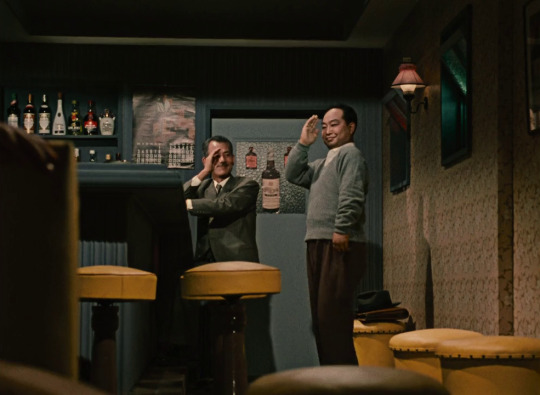
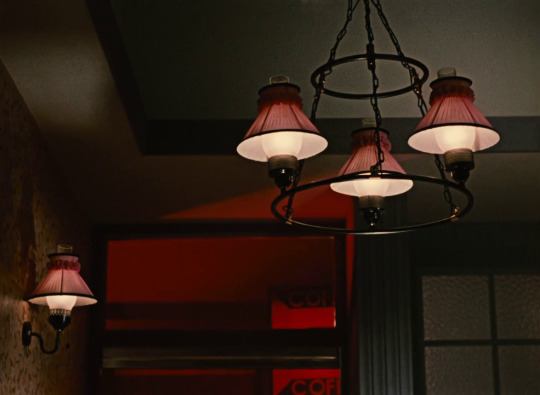
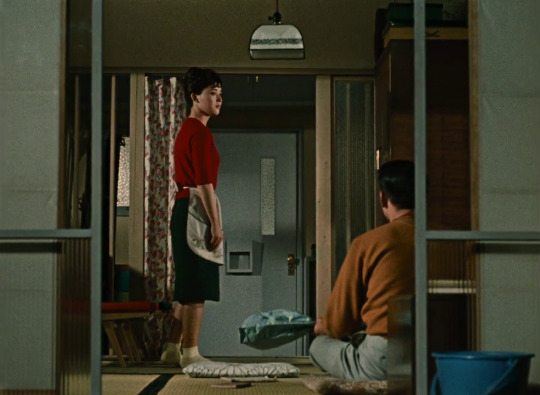




An Autumn Afternoon (1962) | dir. Yasujirō Ozu
#an autumn afternoon#yasujirō ozu#chishū ryū#shima iwashita#keiji sada#mariko okada#films#movies#cinematography#screencaps#yasujiro ozu
187 notes
·
View notes
Text
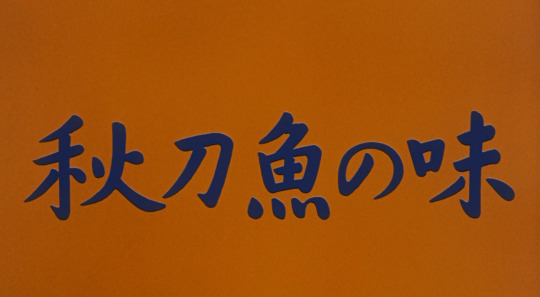
Traditions in transition: cinematic perspectives on the modernization of post-war societies (¼)
The following article is the first in a four-part series looking at how cinema depicts post-war societies’ transformations, and more precisely the transition from a traditional society to a modern one. In order to examine our topic from all angles, every installment of this series will be dedicated to a separate movie, each originating from a different country. Since context is essential to better understand what lies beneath images, and thus propose an in-depth analysis, I will always start by introducing the director and the significant historical events surrounding the films’ releases.
In this inaugural piece, we deal with Yasujirō Ozu’s An Autumn Afternoon (1962) portrayal of westernization and women’s emancipation amidst the Japan societal shifts of the 1960s. Through this work, I wish to highlight the multifaceted societal changes that come with post-war modernization, be it urban and rural spaces experiencing deep transformations due to industrialization, or the evolution of social norms and behaviors.
Part 1. An Autumn Afternoon (秋刀魚の味 The taste of Sanma, Yasujirō Ozu, 1962): westernization of Japanese everyday life and Women’s emancipation
youtube
An Autumn Afternoon's Original Trailer
Japan was propelled into the modern era because of the “Meiji Restoration”, a political event that took place in 1868 and brought about notable changes in the pre-modern feudal society. Commodore Matthew Perry’s visit in 1853 had a part to play in these transformations by leading the Japanese government to realize their “late-developing” status, thus causing the demise of the long-reigning Tokugawa shogunate and the disintegration of a status-ordered system. Accordingly, the “Meiji Restoration” saw the development of small-scale industries, an explosive growth of urban populations, the rise of commerce and the dissemination of education. Despite adopting Western models in areas like law, economy, politics, science and technology, Japan kept its customs and traditions alive. However, upon the completion of its industrial revolution in 1910, Japanese society went through a stagnating period. In fact, economic and social restructuring, which had become crucial, was still not fully achieved.
35 years later, the Axis defeat led to Japan’s occupation by the Allied Forces. Until the Peace Treaty was concluded in September 1951, The S.C.A.P (Supreme Commander for Allied Powers) imposed several reforms, including the adoption of a new constitution in May of 1947. The principle of popular sovereignty was established, and the patriarchy family system abolished. The focus was now on economic reconstruction.
Please CHECK the following article for further historical information
By the 1960s, Japan had emerged from the devastation of World War II and embarked on a path of economic growth, technological advancements and international integration. This era, known as the “economic miracle”, witnessed significant generational shifts. All of which deeply influenced Yasujirō Ozu’s filmography. Especially as the filmmaker was born in 1903 into a middle-class family and has lived through a good part of these dramatic changes.
Set in post-war Japan, An Autumn Afternoon stars Ozu’s regular Chishū Ryū as Shūhei Hirayama, a middle-aged widower and executive at a factory. Hirayama lives with his grown daughter, Michiko (Shima Iwashita), and younger son, Kazuo (Shinichirō Mikami). His elder son, Kōichi (Keiji Sada) has moved out to live with his wife, Akiko (Mariko Okada), leaving Shūhei to be looked after by Michiko. As was the custom in Japan, in the event of the mother’s death, the daughter looks after the family and the household until she eventually marries. At the same time, women are expected to take on domestic roles and marry at a young age, because “older never marry”. As the story unfolds, Shūhei Hirayama’s colleagues and friends begin to express their concern about Michiko’s unmarried status and urge him to find her a suitable husband. Feeling the weight of societal expectations and his own sense of duty, he resigns himself to arrange a marriage for his daughter and encourage her departure from their home. Although the emphasis on this theme may seem, at first, antiquated and patriarchal, women's desire for emancipation is very much present in the atmosphere. Michiko and Akiko, while accepting the traditional roles that society had accorded them, often express their disapproval of certain male behaviors, by refusing to serve them as expected or by questioning their decisions. Both are not afraid to make their voices heard.

Equinox Flower, Yasujirō Ozu, 1958
Notwithstanding the progress in the early 1960s, Japan remained dependent on Western technology imports for a long time, which were really expensive. This period also sees the transition towards television as a dominant medium of communication and entertainment. Due to this Western mass media exposure (movies, commercials, sport events, etc.), younger generations were greatly influenced by Hollywood and American popular culture. Equinox Flower, directed in 1958 already depicted urban dwellers, soda lovers.
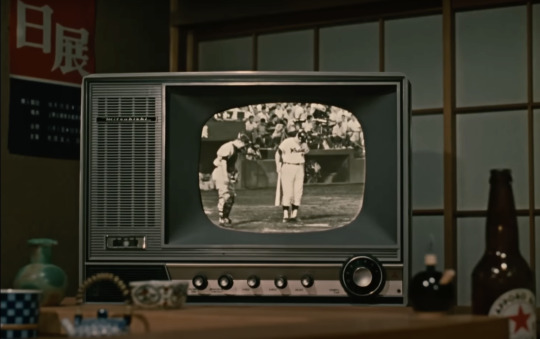


An Autumn Afternoon, Yasujirō Ozu, 1962
In one of the most memorable scenes of An Autumn Afternoon, Shūhei Hirayama and his friends are seated on the floor, around a low table, as was the custom in traditional Japanese restaurants and households. The scene is filmed in Ozu’s regular static low-angle shots, commonly called “tatami” shots. On the opposite side of the restaurant, other clients are having dinner while watching a televised baseball match. Everyone sits around the same Western-style table, but there's no exchange. This juxtaposition beautifully encapsulates the fading traditions and Western growing influence in post-war Japanese society. The setting serves as a microcosm of the societal shifts portrayed throughout the film.
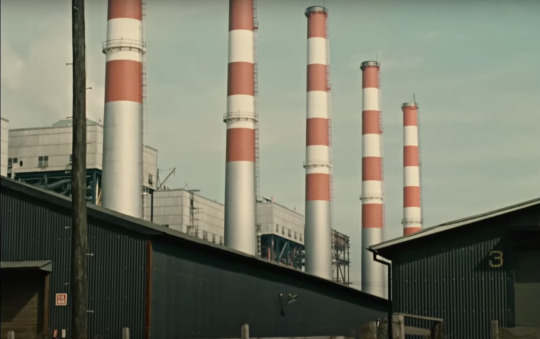


An Autumn Afternoon's opening sequence, Yasujirō Ozu, 1962
I can't conclude this first article without mentioning Ozu’s use of factory shots in the opening sequence. Also known as “pillow shots”, they are devoid of human presence and serve no narrative purpose other than marking time passing and transitions. In this case, they are a nod to the deep spatial transformations caused by industrialization. Factories and industrial areas are very much present in Ozu’s cinema, and are more often than not used as “pillow shots” or a backdrop, as in The Only Son (1936).
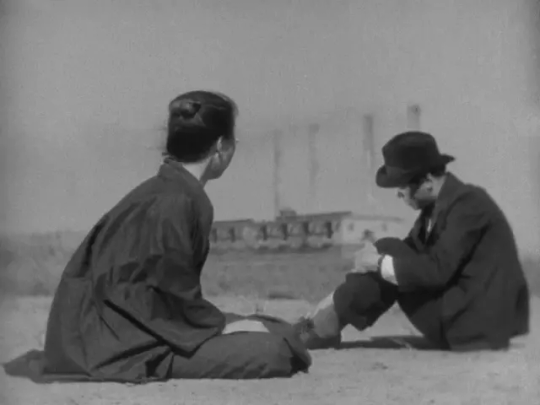

The Only Son, Yasujirō Ozu, 1936
An Autumn Afternoon is Ozu’s last movie before his death in December 1963. The original title of this film means “The taste of Sanma”, where Sanma is a mackerel pike. While never translated correctly, it carries a sense of nostalgia for a vanishing world, its customs and traditions. Like a Proust madeleine, “The taste of Sanma” dredges up a long-lost memory, reflecting on the complexities of post-war Japanese society.
Thank you for joining me on this journey. I genuinely appreciate your interest and support. Please stay tuned so you don't miss my upcoming article. Next time, We’ll be leaving for 1950s Norway through Kitchen Stories (2003). We’ll studying how social and environmental impacts of the Norwegian post-war industrial boom are depicted by movie director Bent Hamer.
Ruth Sarfati
1 note
·
View note
Text
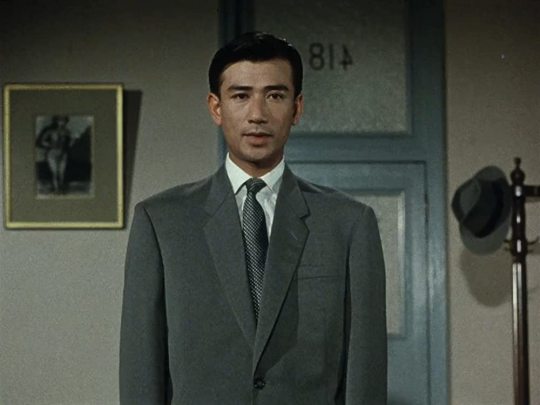
Keiji Sada, December 9, 1926 – August 17, 1964.
Yasujiro Ozu’s Equinox Flower (1958).
5 notes
·
View notes
Text
MOVIE QUOTE OF THE DAY:
“They say if you spend your life in poverty the Lord of Hell will treat you well.”
Keiji Sada in Yotsuya Kaidan (1949)
#YotsuyaKaidan #YotsuyaKaidan1949 #KeisukeKinoshita #Kinoshita
#moviequotes #moviequoteoftheday
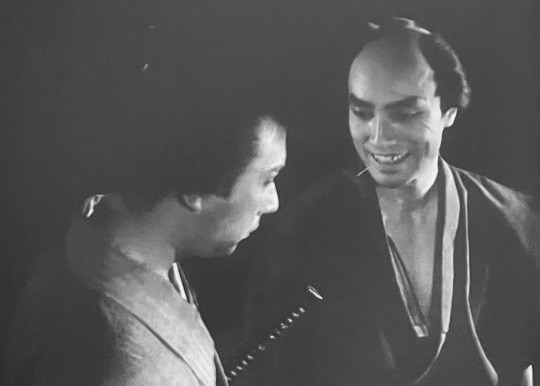
0 notes
Text

Hideko Takamine and Keiji Sada in Ballad of a Worker (Keisuke Kinoshita, 1962
Cast: Hideko Takamine, Keiji Sada, Yoshiko Kuga, Toyozo Yamamoto, Chieko Baisho, Kiyoshi Nonomura, Kin Sugai, Teruko Kishi, Toranosuke Ogawa. Screenplay: Keisuke Kinoshita. Cinematography: Hiroshi Kusuda. Music: Chuji Kinoshita.
Keisuke Kinoshita's sentimental temperament informs this film about 16 years in the lives of Torae (Hideko Takamine) and Yoshio Nanaka (Keiji Sada), beginning with Yoshio's return from the war in 1946 and ending with the graduation of their son, Toshiyuki (Toyozo Yamamoto), from university in 1962. The couple scrimp and save to give their only child an education, hoping that he'll have a better life than theirs: Yoshio works on the roads around their village, and Torae is a housekeeper for his boss. The strength of the film lies in its earnest portrayal of ordinary lives -- even Toshiyuki is only a middling student, which means he has to work his way through college, even with the help of his parents. What it lacks is some wit and irony to leaven the rather plodding narrative.
1 note
·
View note